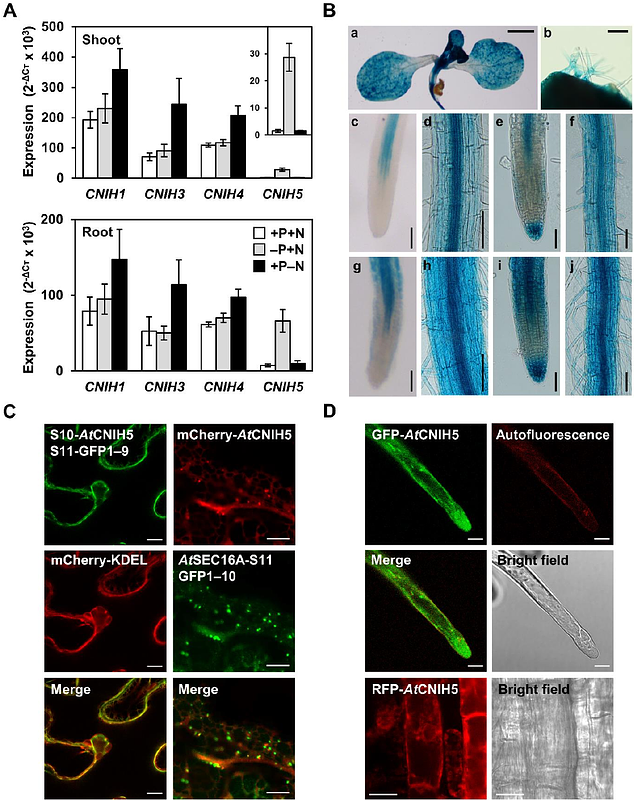Phosphate Starvation-Induced CORNICHON HOMOLOG 5 as Endoplasmic Reticulum Cargo Receptor for PHT1 Transporters in Arabidopsis

Phosphate Starvation-Induced CORNICHON HOMOLOG 5 as Endoplasmic Reticulum Cargo Receptor for PHT1 Transporters in Arabidopsis
Chiu, C.-Y.; Tsai, C.-D.; Wang, J.-Y.; Tsai, M.-H.; Kanno, S.; Lung, H.-F.; Liu, T.-Y.
AbstractPhosphate (Pi) is essential for plant growth and is acquired by the plasma membrane (PM) PHOSPHATE TRANSPORTER 1 proteins (PHT1s). Enhancing the abundance of PHT1s at the cell surface under Pi limitation thus ensures plant productivity. CORNICHON HOMOLOG proteins (CNIHs) are eukaryotic conserved cargo receptors that selectively mediate the endoplasmic reticulum (ER) export of membrane proteins. We identified the Arabidopsis thaliana CNIH5 (AtCNIH5) as a Pi starvation-inducible CNIH gene preferentially expressed in the outer root cell layers above the meristem. AtCNIH5 localizes adjacent to the AtSEC16A-labeled ER exit sites and interacts with AtPHT1;1 and PHOSPHATE TRANSPORTER TRAFFIC FACILITATOR1 (AtPHF1). Loss of AtCNIH5 confers reduced shoot Pi levels and decreased AtPHT1s but increased AtPHF1. The root hair and the epidermis within the transition/elongation zone of the cnih5 mutant display a lower PM targeting efficiency of AtPHT1;1. Moreover, dysfunctional AtCNIH5 exerts a suppressive effect on the growth of phf1 and alleviates Pi toxicity in the Pi overaccumulator pho2. However, the in vivo protein-protein interaction and degradation assays indicated that AtCNIH5 is unlikely a direct target of AtPHO2. Our findings highlight that low Pi-responsive AtCNIH5 interplays with AtPHF1 to promote the PM targeting of AtPHT1s in a cell type-dependent manner.


